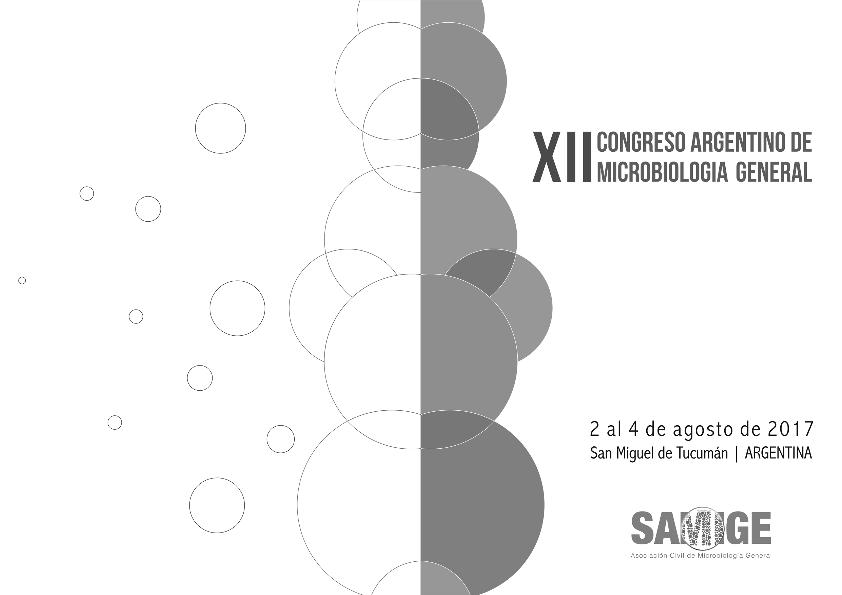Evento
Haloarchaea from the Andean Puna: biological role in the energy metabolism of arsenic
Tipo del evento:
Congreso
Nombre del evento:
XII Congreso Argentino de Microbiología General
Fecha del evento:
02/08/2017
Institución Organizadora:
Asociación Argentina de Microbiología;
Título del Libro:
XII Congreso Argentino de Microbiología General
Editorial:
Asociación Argentina de Microbiología
Idioma:
Español
Clasificación temática:
Resumen
Arsenic metabolism is proposed to be an ancient mechanism in microbial life. In fact, some Bacteria andArchaea are able to exploit arsenic as a bioenergetic substrate in either anaerobic arsenate respirationor chemolithotrophic growth on arsenite as an electron donor. The high-altitude Andean lakes (HAAL)consist of several shallow lakes located in a high-altitude desert known as Puna, and these placed aredistributed through Argentina, Chile, Bolivia, and Peru along the Central Andes region in South America.This environment host unexplored ecosystems of shallow lakes and salt flats at altitudes of 3700 metersabove sea level (masl). In these places high concentrations of arsenic were found in the water andthese was attributed to the high Andean volcanism phenomenon which provides the geoenvironmentalconditions and determine the availability of arsenic. Recently, our group has reported a metagenomicsanalysis of a microbialite from Diamante Lake, Catamarca, which was widely dominated by Archaea(96%), assigned to the class Halobacteria (commonly called as haloarchaea). Moreover, these authorsstrongly suggest that the prevalent haloarchaeal part of the biofilm have all the genes necessary for anaerobicarsenate respiration and arsenite oxidation, suggesting that these haloarchaea use arsenic compoundsas bioenergetics substrates to sustain growth. The objective of our study was to investigate thepresence and expression of genes (aioA and arrA) involved in obtaining energy from arsenic compoundsin environmental samples and isolated strains. The effect of As [V] and As [III] during isolates growth andthe possible role of As as bioenergetic substrate in two selected strains was also evaluated. The presenceof aioA and arrA genes was confirmed in total community DNA from Diamante and Tebenquiche lakes,and the expression of these genes was confirmed by metatranscriptomic RNA samples, suggesting anactive expression of both genes in the studied samples. Using selective isolation techniques, eighteenmicroorganisms belonging to the Halorubrum genera (phylum Euryarchaeota) were isolated. The genesenconding for aioA and arrA were detected in most of the isolates and their expression was verifiedin two selected strains. The physiological assays using a Chemically Defined Medium (CDM) showed apositive effect of As[III] and As[V] on cell growth. Moreover Halorubrum sp. DM2 was able to oxidizeand reduce As. The confirmation of oxidation/reduction of arsenic and the transcriptional expression ofthese genes by RT-PCR in the strain DM2, support the previously raised hypothesis that the arsenic couldbe used in bioenergetics processes by the microorganisms inhabiting these environments.
Palabras clave:
Arsenic
,
Archaea
,
Diamante Lake
,
Tebenquiche Lake
Archivos asociados
Licencia
Identificadores
Colecciones
Eventos(PROIMI)
Eventos de PLANTA PILOTO DE PROC.IND.MICROBIOLOGICOS (I)
Eventos de PLANTA PILOTO DE PROC.IND.MICROBIOLOGICOS (I)
Citación
Haloarchaea from the Andean Puna: biological role in the energy metabolism of arsenic; XII Congreso Argentino de Microbiología General; San Miguel de Tucumán; Argentina; 2017; 1-2
Compartir




